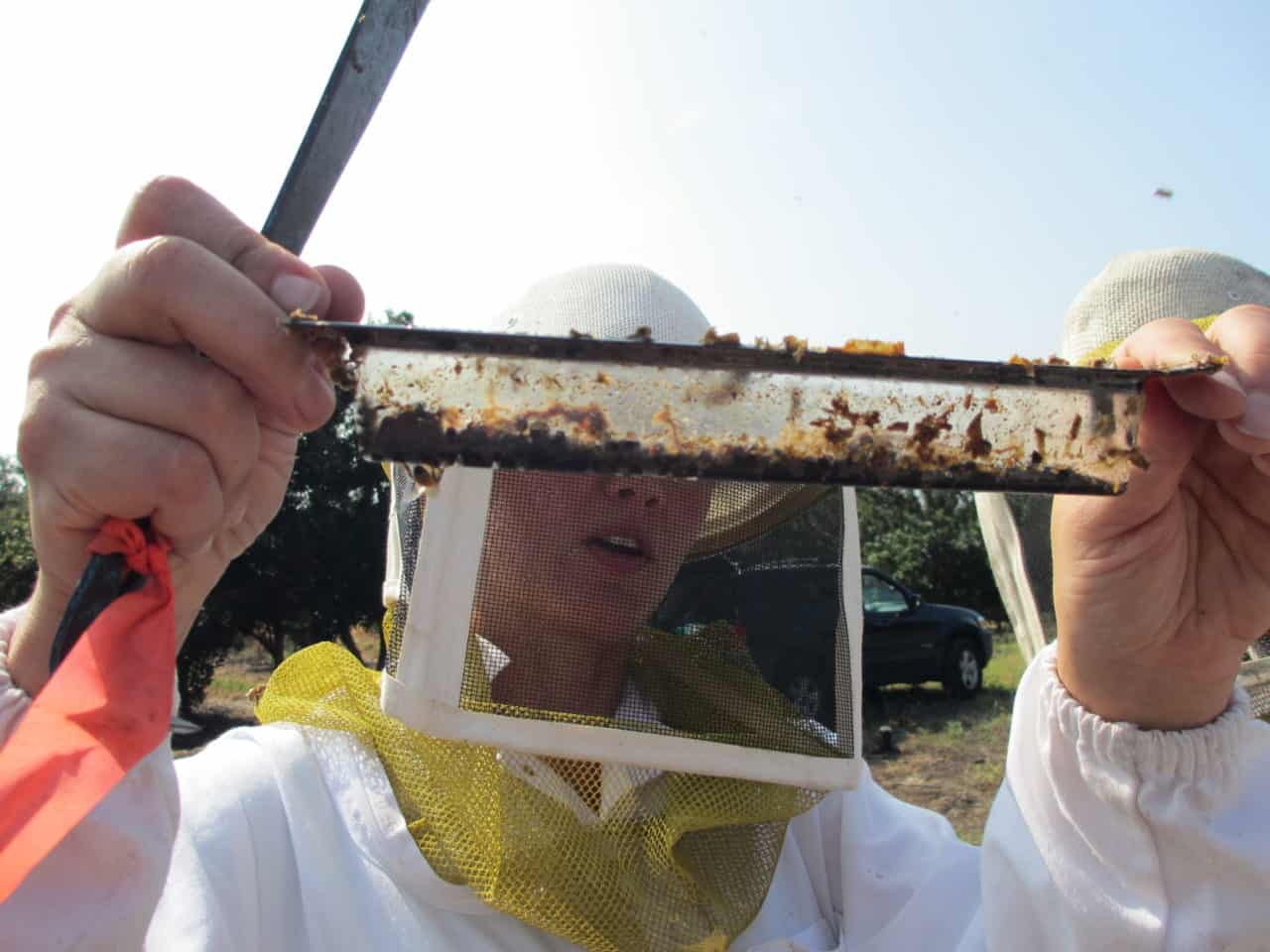It was a couple weeks ago that Heather, Jennie and I were talking about using drone comb as Varroa management in a colony. Drone larvae are particularly attractive to Varroa mites. By adding drone comb to a hive, a beekeeper is creating a lure for the mites in the hope that they will go to the drone larvae instead of infecting precious worker larvae. Once the drone brood is capped, the beekeeper removes the frame and freezes it, thoroughly killing the pesky mites. While it is apparent that Varroa are attracted to drone larvae, it occurred to me, why is this so? What makes drone…
Eric Mussen
If you want to learn more about Eric, start here. Also, don’t forget to take the surveys!!
Survey Time: An Appeal to Our Greater Good
For a great many of us, it is as easy to slip into apathy as it is to succumb to eating our children’s Easter candy – especially the chocolate peanut butter cups. We sometime remove ourselves from involvement and responsibility of the larger social structure because, well, we think someone else will take care of what needs doing; however, this cannot be the case now. It is survey time at the Bee Informed Partnership and that means involvement FROM EACH AND EVERY BEEKEEPER. Whether you manage 1 hive or 10,000 hives, we want to hear from you. I’m making it easy on you. Here is…
Coordinated BIP effort aims to cut in half annual bee colony losses.
BEE Informed Partnership: Coordinated BIP effort aims to cut in half annual bee colony losses. by Richard Lehnert Good Fruit Grower magazine article, March 15th, 2012. "After five years of annual colony losses near or above 30 percent, beekeepers have settled in for the long haul in their struggle to find solutions to the problem of unsustainably high honeybee death losses. Scientists have also settled in to help them..."continue article here...
Queen Bee Identification
Over the past few months we have been sampling and assessing colonies throughout queen breeders operations. We looked at colony size, weight, brood pattern, bee color and queen status. I had a chance to photograph some different Italian queens (Apis mellifera ligustica) and Carniolan queens (Apis mellifera carnica). Both species are usually gentle and can be kept in areas with people without problems. There are many differences between the two subspecies of bees; some say the Carniolan queens are better for colder climates. Despite these differences, queen breeders generally breed for some of these characteristics below. I have also included photographs of some of these…
Queen Season
It is queen producing season! The first grafts happened late February and now thousands and thousands of nucs (mini colonies) are scattered across the Sacramento Valley. Normally, how it works is the beekeepers make up the tiny colonies with about a spam can of bees (that is the actual measurement in a few cases), put in a cell with a queen about to emerge, then place the nuc out into the field so the queen can mate a few days post-emergence. The beekeepers will wait until the new queen is laying eggs and generally looks healthy, then catch and cage the queen, and ship her…
Spring Sampling Season
Our spring sampling season is almost finished (in Northern CA, spring starts in January - coming from the Midwest, I initially found that very confusing) . It has been a marathon to try and get all the bees sampled before the queen breeding season starts. We've been sampling colonies for Varroa, Nosema, viruses, and hygienic behavior that the beekeepers picked out as potential queen mother colonies. The data is only really useful if they get it prior to the start of their grafting, so we have been working pretty much non-stop since the end of January to get the information to them in time. We…
President’s Address to AIA 2011
Below is an address I recently gave to the AIA First off, I would like to thank the people who worked hard to arrange this meeting. You have all noticed that we are a bit decentralized out here, and I’m sure you can imagine the logistics to organize shuttles, security, catering, in addition to planning a great program were not easy. Planning required a lot of effort and time. AIA Vice President Paul Cappy, USDA-APHIS Honey Bee Program Manager Robyn Rose and USDA-ARS Entomologist Bart Smith have done an extraordinary amount of work to plan this joint meeting with AAPA and ABRC. They deserve our…
Bees in bare almonds
Right now, beekeepers are pretty much done with moving bees across the country and into the almonds. The beekeepers we work with are doing the same thing - moving colonies from their different yard locations across Northern California into the almonds. Now, everyone is anxiously awaiting bloom. The Blue Diamond Almond company has a website to estimate bloom time. Almonds are so dependent on bees to get a crop and beekeepers are paid a premium price for their colonies (why some beekeepers come in from the east coast), so this is a really anxious time for both parties. Everyone just hopes for good enough weather…
Worldwide Honey Bee Colony Losses Continue
http://www.ibra.org.uk/articles/US-honey-bee-winter-colony-losses-2010-11 International Bee Research Association The world's longest established apicultural research publishers Press Release[embargoed until 00:01 GMT on 1/2/12] Worldwide honey bee colony losses continue Since 2006 there has been concern worldwide about losses of honey bee colonies, especially the phenomenon of “Colony Collapse Disorder” in the USA. Information about the extent of these losses has,to date, been patchy, unsystematic and difficult to compare year on year and from country to country. Today, for the first time, the results of systematic surveys in Europe, north America, China, Israel and Turkey are published together in the Journal of Apicultural Research. The research has been carried out…

